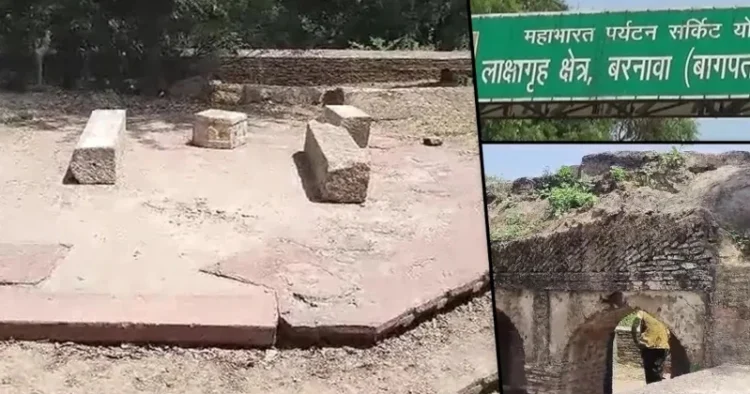In a landmark judgment delivered on February 5, a local court in Baghpat, Uttar Pradesh, concluded a 53-year-long legal battle by awarding ownership rights over 100 bighas of land and a tomb to the Hindu side in the Lakshagriha-Mazar dispute.
The court’s ruling, in favour of respondent Krishna Dutt Ji Maharaj, recognised the ancient mound as Lakshagriha (Lakhamandap), a historical site mentioned in the ancient epic Mahabharata. The decision dismisses the claims put forth by the Muslim side regarding a Dargah and cemetery.
The contested site, located on an ancient hill near the confluence of the Hindon and Krishni rivers in Barnawa village, Baghpat district, has been at the center of a longstanding controversy. The area, now under the protection of the Archaeological Survey of India (ASI), once housed a tomb of the Sufi saint Badruddin Shah and a graveyard.
The legal dispute traces its roots back to 1970 when Mukim Khan, the then ‘mutwalli’ (caretaker) of the graveyard, initiated legal proceedings, seeking to assert ownership over the land. Khan aimed to prevent Hindus from encroaching on the site, desecrating graves, and performing ‘havan’ ceremonies.
Krishnadutt Maharaj, a local Hindu priest, became a defendant in the case. The Hindu community argued that the site held historical significance as the location of the ‘lakshagriha,’ a palace made of lac that Duryodhana had constructed to trap and kill the Pandavas.
Ranveer Singh Tomar, the lawyer representing the Hindu side, emphasised the court order’s scrutiny of the plaintiff’s claims, revealing “glaring loopholes.” The Muslim side had claimed that the Sufi saint’s tomb was 600 years old, and a graveyard emerged after his death, designated as waqf property by the ruling ‘Shah’ of that era. However, they failed to provide the ruler’s name, and government records did not mention the graveyard.
The court took notice of the Official Gazette dated December 12, 1920, produced by the defendants. In this document, the ASI stated: “A little mound to the south of the town called ‘Lakha Mandap’ is supposed to be the scene of an attempt to burn the Pandavas, situated in Barnawa, 19 miles NW from Meerut in Sardhana tehsil.”
Additionally, the court observed that the Muslim side could not establish whether the disputed site was waqf property or a graveyard in 1920. This crucial historical documentation played a pivotal role in the court’s decision.
In the aftermath of the verdict, heightened security measures have been implemented at Lakshagriha, and the police have been placed on alert. The ruling has significant implications for the religious and historical narratives associated with the site.
This development marks the end of a protracted legal battle, bringing closure to a complex dispute that has spanned over five decades. The judgment not only recognises the historical and cultural significance of the Lakshagriha site but also upholds the rights of the Hindu community over the contested land and tomb.
The Lakshagriha-Mazar dispute has been closely watched, and the verdict is expected to have broader implications for similar cases involving historical and religious sites across the country. The meticulous examination of historical records and the ASI’s documentation set a precedent for the resolution of such disputes, emphasising the importance of evidence-based decisions in matters of historical and cultural significance.




















Comments